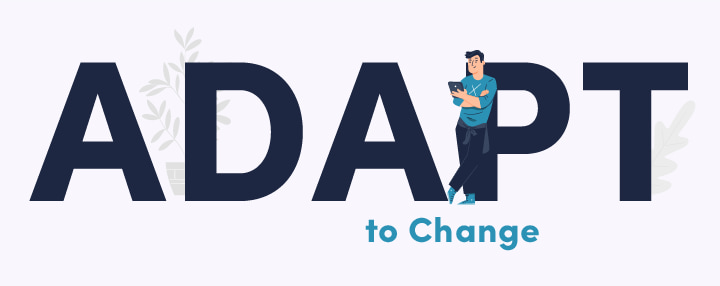Agile Software Development strategy has revamped the development processes for software companies. But, what is Agile Development Strategy? The Agile Development is the innovative approach to develop software products where flexibility and speed hold precedence.
Since 2001, when the Agile Manifesto surfaced, almost every organization will say they “do Agile” but many only provide lip-service to the values and principles of the Agile Manifesto.
The Agile Manifesto is the new bible for the software development industry. Its values and principles offer more concrete examples of how Agile software development should take place.
To better understand the Agile Development, we need to briefly see what these values and principles mean, and assess whether they still matter.
- Principle # 1: Early and Continuous Delivery of the Product
- Principle # 2: Adapt to Change
- Principle # 3: Frequent Delivery
- Principle # 4: Business and Developers Cooperation
- Principle # 5: Motivated Individuals
- Principle # 6: Face-to-Face Interaction
- Principle # 7: Working Software
- Principle # 8: Maintain a constant pace
- Principle # 9: Technical Brilliance
- Principle # 10: Simplicity
- Principle # 11: Teams Self-Organization
- Principle # 12: Regular Reflection and Adjustment
Four Core Values and 12 Principles of Agile Software Development
The Agile Development is standing on 4 core values and 12 principles. It is essential to understand these values and principles to understand the Agile approach clearly.
Four Core Values

Let’s discuss the core values first in details:
Value 1: Individuals and Interactions
Several development teams have focused on designing their software using the past's best available resources or methods. Although these aspects are important, “The Agile Manifesto” implies that the operations' individuals are much more valuable.
It is the key to success to have the right set of people in the software team. The best techniques available are of no value in the wrong hands. How these people interact with one another is maybe even more essential. The team members' interactions help them to work together to solve any challenges that arise. You can read more about it in my article how to build high-performance agile teams.
Value 2: Working Software
In the past, software developers would spend countless hours making comprehensive records. It was also before they began to write a single code line. And, even though documentation is not wrong, you must concentrate on delivering working software to your customers.
The Agile Manifesto makes shipping software for your customers one of the main focuses. You can then collect reviews to enhance upcoming releases.
Value 3: Customer collaboration
Contracts were once the emperor. You would draw up arrangements for your clients and would then describe the final product in depth. Consequently, what the agreement meant, what the product provided, and what the consumer specifically wanted are sometimes contrasted.
The emphasis should be on continuing growth, according to the Agile Manifesto. You need to establish a feedback mechanism for your consumers to make sure your product performs efficiently.
Value 4: Reacting to change
Could you imagine you're planning a roadmap and never modifying it? Well, this is what happened in the past.
The concern with static roadmaps is that in a fixed environment, it doesn’t exist. Needs and demands still vary, and goals continually change. This static roadmap would rapidly become obsolete.
For this cause, the Agile Manifesto argues that a software team should turn and change direction if necessary with a flexible roadmap that represents it. A dynamic roadmap can range from a quarter to quarter, even months to months, and Agile teams can keep up with those changes.
Twelve Principles of Agile Software Development - Agile manifesto
The Twelve Principles of Agile are intended to create and support an software development approach that is focused on the client and aligns with business objectives, especially when users’ needs and market forces change.

Now, let’s discuss them in more detail.
Principle # 1: Early and Continuous Delivery of the Product
As the first principle says:
The highest priority of the Agile method is to satisfy the customer through early delivery of the software.
It would certainly not please the client if the development company takes too long to deliver the product. Not only are early reviews worthwhile, but users demand quick execution during the process are also important. And for the client, each delivery should add some value from the business perspective.
Principle # 2: Adapt to Change
The second principle states:
Welcome the changing requirements, even late in development. Agile processes harness change for the customer’s competitive advantage.
Nobody can predict the specifications of a piece of software in an environment continuously evolving at a high rate. That being said, businesses don't like surprises. However, what they like less is to spend money on a non-relevant item. The software can give the client a competitive edge when it suits new and latest requirements and not last year's ones.

Principle # 3: Frequent Delivery
The next principle states that:
Deliver working software frequently, from a couple of weeks to a couple of months, with a preference to the shorter timescale.
In truth, this principle appears to be a replication of the first, and in a sense, it is. The first principle, however, notes that valuable software should be delivered early. This principle digs deeper into what delivery entails constantly. It advises that you produce a new update of the software in a short period. This ensures that smaller updates and smaller versions are less likely to cause glitches. More regular updates give the consumer more input.
Principle # 4: Business and Developers Cooperation
The fourth principle states:
Business people and developers must work together daily throughout the project.

Developers are often shielded off from business people. Between them, analysts are positioned to "translate" business language into a language developers may understand. This Agile principle calls for companies to eliminate the hurdles and encourage developers and businesses to communicate regularly. This strengthens mutual compassion and consideration.
Principle # 5: Motivated Individuals
The fifth principle states:
Build projects around motivated individuals. Give them the environment and support they need, and trust them to get the job done.
An Agile team is a mature and experienced team to create software with reliability. This takes some trust. So why have they been recruited if you can't trust the developers? Motivated developers will be able to do their job professionally with the right coaching, environment, and tools.
It would be doubtful that your project will succeed as you create your projects around individuals who are unmotivated or demotivated by a lack of confidence or assistance. In one of my articles, you can read how to sustain performance with your Agile team while working remotely.
Principle # 6: Face-to-Face Interaction
The sixth principle states:
The most efficient and effective method of information to and within a development is face-to-face conversation.
In the Agile manifesto, a lot of importance is given to effective communication between the involved parties, especially face-to-face communication. This is now easier as the number of ways people can connect has expanded with technology. We should avoid asynchronous communication like emails, and choose a meeting through video conferencing instead.

Even if your teams are distributed, either you wished so or you were forced to, due to external conditions, it is still possible to stay Agile and run effective communication.
Principle # 7: Working Software
The seventh principle states that:
Working software is the primary measure of progress.
Software development takes a long time. So, for companies to calculate success is completely logical. The best way to assess success is by working with software as indicated by this Agile principle. Complete analyses, entire versions, or elegant mock-ups are useless until they are turned into working software. They might be important, but if at least a small portion of it has not been placed into a working product, then you have not generated value for your client.
Principle # 8: Maintain a constant pace
The eight principle states that:
Agile processes promote sustainable development. The sponsors, developers, and users should be able to maintain a constant pace indefinitely.
When putting Agile into practice, a repeatable and iterative pattern should be established where sustainable development of the project takes place at a constant rate. This prevents the development team from being overwhelmed, while the project keeps on progressing at an appropriate pace.

The goal is to avoid overburden and over-stressed and optimize the way the team’s work so they can frequently deliver increment to the market and respond to change without requiring personal heroics from the team.
Principle # 9: Technical Brilliance
The ninth principle states that:
Continuous attention to technical excellence and good design enhances agility.
Many businesses favour time-to-market rather than effective technology design. They can't be blamed, in all honesty. The unreleased software is an expense as described. Technical competence doesn't affect the end-user and does not provide the company with revenue.
But if teams ignore a successful technical concept for too long, pace and time-to-market will continue to decrease. They would reduce their willingness to adjust the commodity in response to changing demand. They’re losing their agility.
Providing value to the client is the primary objective of any Agile team. However, it is extremely important to have a multi-skilled team that can handle all the technical aspects of the project and provides the opportunity for continuous improvement.
Principle # 10: Simplicity
Another principle states that:
Simplicity—the art of maximizing the amount of work not done—is essential.

Maximizing the amount of work not completed can be done at different points: deleting procedures that no longer apply, automating manual processes, using existing libraries rather than writing your own, etc. It all saves time and resources and provides us with space to gain more value. This is an ongoing process and some analysis needs to be done to decide when and how we can improve.
Comprehensive documentation customer collaboration and simplicity
The principle of Simplicity reminds development teams to keep comprehensive documentation of the customer relationship to a minimum and, when necessary, ensure that the documentation is as simple as possible.
Principle # 11: Teams Self-Organization
One of the last principles is that:
The best architectures, requirements, and designs emerge from self-organizing teams.
This principle is a synthesis of certain previous principles. Suppose we want companies and developers to interact consistently and easily if we want to evaluate success using job software rather than theoretical models. If we are dealing with people with encouragement, then we should have teams that make quality software without too much interference from above.
Teams need to learn to manage all software development areas: they need to obtain specifications by communicating with the company, writing quality software, managing their jobs, etc. This results in great software because the developers will start to “own” the software.
Developers are still known as the factory-line staff who can be provided with specs. But the development of software is work that needs even more. To deliver, the team needs to be allowed to organize itself.
The story is that Agile software developers should carry this role up. Beyond only writing code, an Agile team allows developers to carry on responsibilities.
Principle # 12: Regular Reflection and Adjustment
Last but not least principle states that:
At regular intervals, the team reflects on how to become more effective, then tunes and adjusts its behaviour accordingly.
Self-organizing teams should take time at regular intervals to examine how they operate and adapt accordingly.

Agile methodologies stand on the concept of iteration, where teams learn from their past mistakes and continuously improve their performance and effectiveness. No team works perfectly. A mature, Agile team will recognize shared respect problems and discuss ways to improve their skills as well as take actions to strengthen their operation.
It All Still Matters
All the core values and principles of Agile Software Development still matters today. That is because they are derived based on economic reality and human nature - the two facts that don’t change much. Some of these principles have become even more radical than before. Take a simple example that now, a software development company can deploy products weekly or even daily. On the other hand, some of the principles have changed in their meanings, such as after COVID-19, we have learned that it is not a necessity to be in the same room in order to communicate effectively. It can be easily done with some help from technology.
Conclusion
Agile Manifesto has made software development companies more capable of adapting to changes. There are different Agile methods that benefit from it, however, Agile itself is not a methodology nor a framework. It is a set of values and principles discussed in detail in this article. That is why it is incredibly flexible and can be applied by different people and organizations.
Enthusiasts of Agile methodologies state that the core four values from the Agile Manifesto promote a software development process focused on effectiveness and quality by creating products that meet clients’ needs and expectations.
However, to make a successful transition into Agile, you also need to follow the 12 Agile principles, since they precisely show how to build the necessary foundation.
If you have any questions related to Agile development methodologies you can read a series of articles on our website or contact our team of highly-experienced experts anytime.




